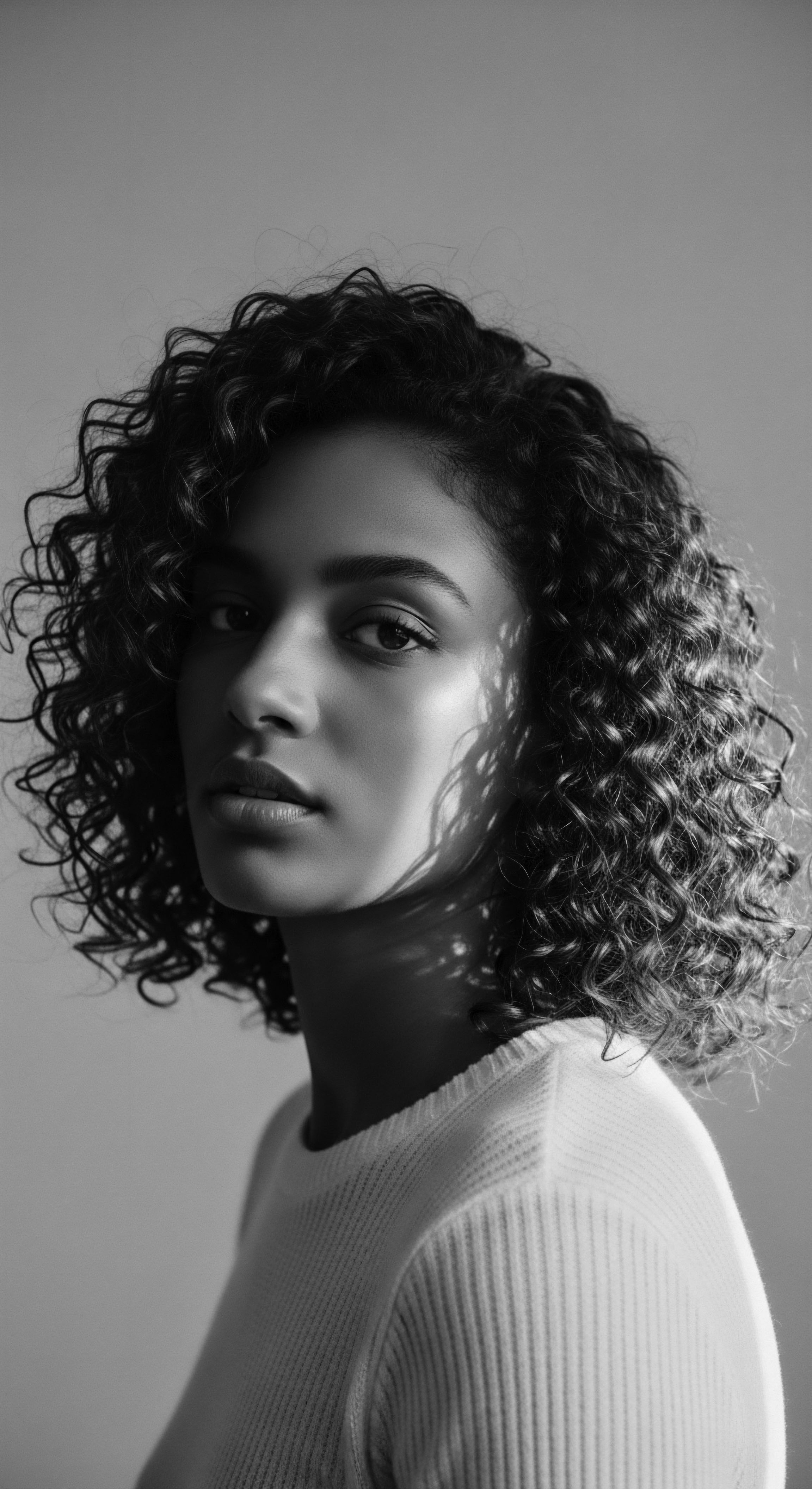
Roots
To truly comprehend why the very substance of textured hair often twists and coils, we must journey beyond a mere surface glance, delving into the deep archives of biology and the ancient whispers of collective memory. Consider for a moment the profound connection one often feels to the living crown upon their head – particularly those whose strands dance in intricate patterns. It is a connection that spans generations, carrying with it tales of resilience, ingenuity, and a profound belonging.
The scientific inquiry into the curvature of hair follicles, for us, is never just a cold dissection of cellular mechanisms. It is an exploration of a physical attribute so intimately linked to the heritage of Black and mixed-race communities, a physical manifestation of survival and identity that has been passed down through time.

Hair’s Intrinsic Form
The core of textured hair’s distinctive shape lies within the follicle itself, the tiny organ nestled beneath the skin’s surface. Unlike the nearly cylindrical follicles that yield straight strands, those that birth waves, curls, and coils present a decidedly asymmetrical, often S-shaped or curved contour. This intrinsic form dictates the journey of the hair shaft as it grows. As cells proliferate within the hair bulb, pushing the hair fiber upward, this curved pathway causes the strand to bend and turn, forming its characteristic shape.
Imagine water flowing through a winding riverbed; the path of the river dictates the curve of the stream. Similarly, the unique architecture of the follicle orchestrates the hair’s very path.
Within this intricate biological ballet, proteins play a crucial role. Keratin, the fundamental protein component of hair, is not distributed uniformly throughout the shaft in textured hair. This uneven distribution, alongside the specific way keratin cells link together, contributes directly to the hair’s elliptical or flattened cross-sectional shape. The more elliptical the cross-section, the more pronounced the curl.
Furthermore, the number and positioning of Disulfide Bonds, strong chemical links between sulfur atoms in keratin, also influence the degree of curl. More disulfide bonds, strategically placed, lead to a higher degree of curvature. The interplay of these cellular and molecular elements within the curved follicular structure is what gives textured hair its glorious, multifaceted appearance.
The intrinsic, often S-shaped or curved, architecture of the hair follicle is the primary biological architect of textured hair’s distinctive form.

Echoes of Time ❉ Evolution’s Imprint
The discussion of why textured hair follicles curve extends beyond individual biology; it reaches back into the deep history of human evolution, a powerful testament to our ancestral landscapes. Anthropological perspectives suggest that tightly coiled hair may have served a vital adaptive purpose for early humans inhabiting the intensely sunny climes of Africa. The spiraled structure and wider follicular pattern of textured hair allow greater airflow to the scalp, which could have provided a natural cooling mechanism, safeguarding the brain from extreme heat. Additionally, the density created by the curls provided excellent protection against the sun’s potent ultraviolet radiation.
Some scholars propose that Afro-textured hair represents the ancestral human hair condition, suggesting an original design for survival in hot environments. As human populations migrated across continents, environmental pressures likely contributed to variations in hair shape and color. This evolutionary narrative reminds us that the hair we carry on our heads today is not merely an aesthetic preference; it carries the legacy of millennia of human adaptation and resilience, a physical link to our origins.

Naming the Strands ❉ Lexicon and Lineage
The diverse forms of textured hair demand a language as rich and varied as the hair itself. Understanding why follicles curve also requires an appreciation for how cultures, particularly within Black and mixed-race communities, have traditionally categorized and honored these distinctions. While modern science employs terms like ‘S-shaped’ or ‘elliptical cross-section’ to describe the follicle’s mechanics, ancestral knowledge often speaks to the visual poetry of the hair—kinks, coils, waves, and curls—each carrying its own identity and methods of care.
The way we name and classify hair types is not neutral; it often reflects cultural understandings, historical power dynamics, and even biases. In the past, Eurocentric beauty standards often dismissed or devalued textured hair, leading to societal pressures for conformity. However, within African and diasporic communities, hair has always been a language, a complex system of identity markers. The precise biological reasons for follicular curvature ground this cultural significance, providing a scientific validation for an attribute that has long been understood through lived experience and collective heritage.
- Follicular Shape ❉ The primary determinant, varying from round (straight hair) to oval or S-shaped (textured hair).
- Keratin Distribution ❉ Uneven arrangement of keratin proteins within the hair shaft, reinforcing the curl.
- Disulfide Bonds ❉ The number and arrangement of these chemical bonds contribute to the strength and persistence of the curl.

Ritual
The inherent curvature of textured hair follicles has, over millennia, profoundly shaped not only the biology of the strand but also the very contours of cultural expression, traditional practices, and shared identity within Black and mixed-race communities. The way hair grows from its curved follicle has dictated the necessity for specific care, inspired innovative styling techniques, and served as a silent, yet powerful, canvas for narratives of belonging, resistance, and beauty. This is a story where biology and heritage intertwine, each influencing the other in a profound, enduring dialogue.
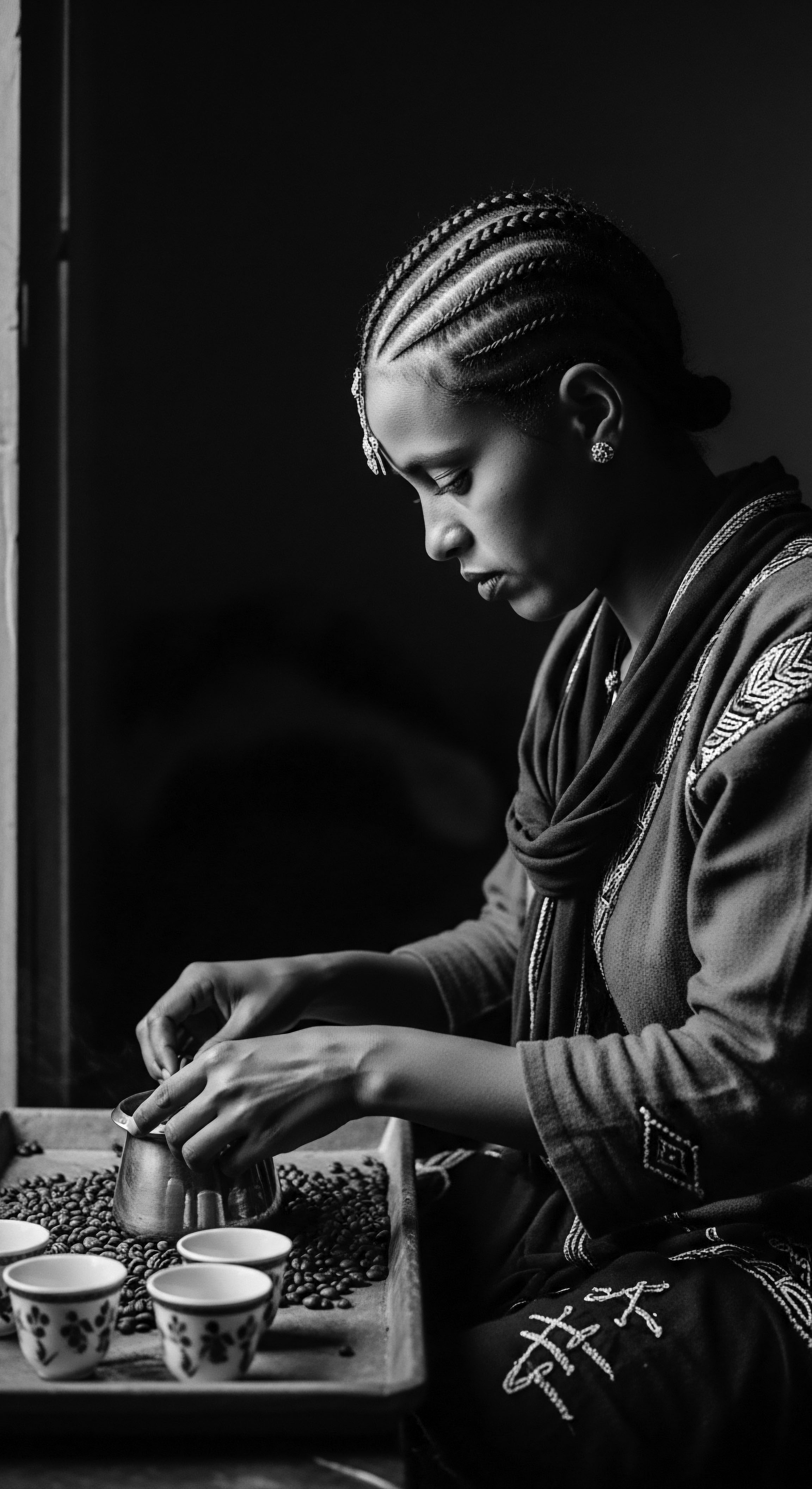
The Art of Shaping ❉ Beyond Aesthetics
The unique physical attributes resulting from a curved follicle—the propensity for dryness due to sebum’s difficulty traveling down the coiled shaft, and the inherent fragility at each bend—called for particular attention and methods of care. From this biological reality arose an entire art of shaping and safeguarding textured hair. Ancient African societies developed intricate protective styles like braids, twists, and cornrows, not simply for adornment but for their practical benefits.
These styles minimized tangling and breakage, preserved moisture, and shielded the scalp from the elements. They were methods born of necessity and elevated through generations of practice into profound artistic expressions.
The very act of manipulating textured hair into these configurations speaks to an understanding of its inherent structure. The tightly braided rows of cornrows, for example, lie flat against the scalp, a design that respects the hair’s natural curvature while offering maximum protection. The ingenuity behind such styles demonstrates a deep, intuitive knowledge of hair mechanics long before modern science could explain the precise angles of the follicle.
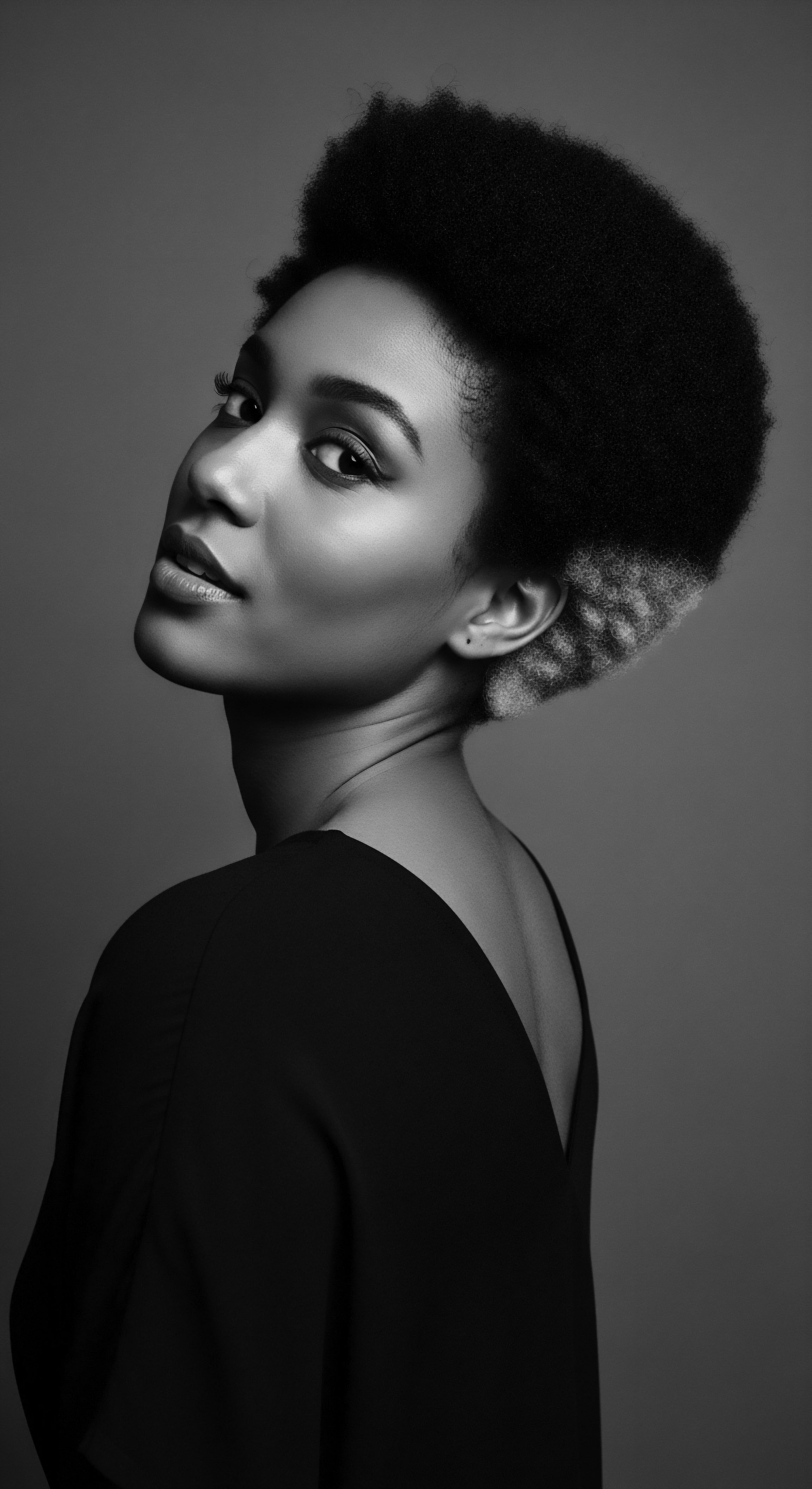
Messages in the Mien ❉ Hair as Communication
Long before written records, hair served as a vital form of communication across diverse African societies. The styles crafted from hair, shaped by the foundational curvature of the follicles, spoke volumes about an individual’s life. A person’s hairstyle could denote their age, marital status, social rank, wealth, or even spiritual beliefs.
The Yoruba people, for instance, created complex hairstyles that signaled community roles. The Himba tribe of Namibia adorned their locs with ochre paste, a visible connection to their earth and their ancestors.
The head, often regarded as the seat of spiritual energy and the closest point to the divine, was treated with immense reverence. Hair rituals were ceremonial, passed down through generations, and often involved communal grooming practices that strengthened familial and community bonds. The ability of textured hair to hold these elaborate styles, a direct consequence of its follicular structure, made it an ideal medium for these cultural narratives.
Hair’s innate curvature underpinned its historical role as a living canvas for cultural communication, status, and spiritual connection in African societies.
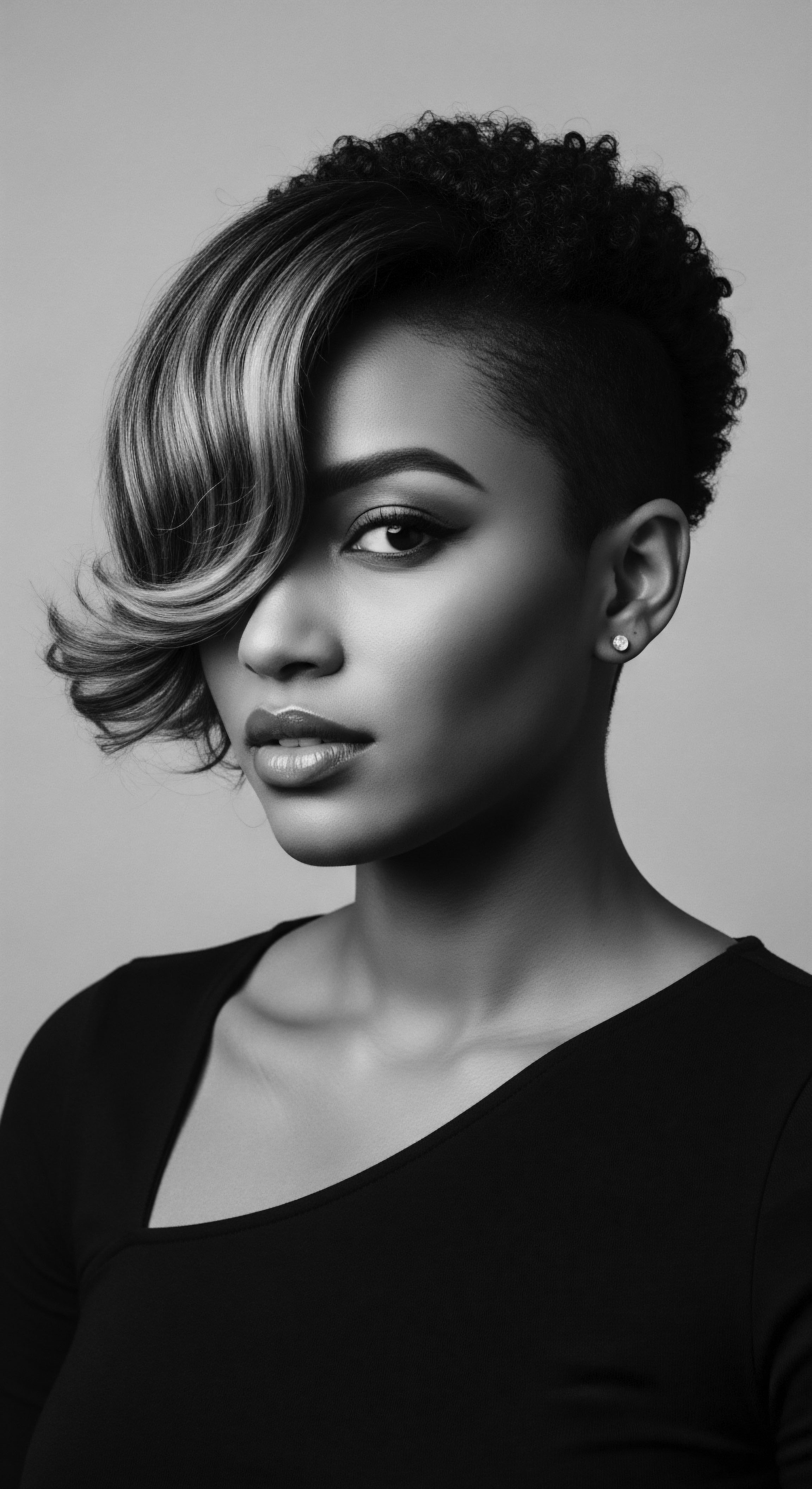
Endurance in Adversity ❉ Hair in the Diaspora
The transatlantic slave trade sought to sever these profound connections. One of the first dehumanizing acts inflicted upon enslaved Africans was the forced shaving of their heads, a brutal attempt to strip away their identity, cultural memory, and spiritual links. Yet, even in the face of such profound oppression, the heritage of textured hair endured. Across the diaspora, individuals held steadfast to traditional hair practices, adapting them to new, often harrowing, circumstances.
A particularly powerful historical example lies in the use of Cornrows as Hidden Maps during periods of enslavement. In some regions, intricate patterns of braids, carefully laid flat against the scalp (a feat enabled by the hair’s natural curvature), were used to secretly convey escape routes or geographical information. Enslaved Africans, forbidden from possessing maps, found a covert method of sharing vital knowledge, braiding freedom directly into their hair. This remarkable ingenuity, noted by scholars like Lori Tharps in her co-authored work “Hair Story ❉ Untangling the Roots of Black Hair in America,” highlights how the physical attributes of textured hair and the ancestral knowledge of styling it became powerful tools of resistance and survival.
(Byrd & Tharps, 2001). This specific historical context underscores the deep connection between the biological reality of hair curvature and the heritage of defiance and ingenuity.
| Historical Significance Indicator of social status, age, or marital standing in pre-colonial Africa. |
| Contemporary Resonance A declaration of personal style and cultural pride. |
| Historical Significance A spiritual conduit, connecting individuals to ancestors and the divine. |
| Contemporary Resonance A symbol of holistic wellbeing and self-acceptance. |
| Historical Significance A hidden map or communication tool during enslavement. |
| Contemporary Resonance A powerful symbol of resistance against Eurocentric beauty norms. |
| Historical Significance The curved follicle, a biological constant, has anchored a fluid yet persistent heritage of meaning and practice. |

Reclaiming the Crown ❉ Modern Affirmation
The legacy of resilience continues to shape the textured hair narrative today. The Natural Hair Movement, rising prominently in the 1960s and 70s as an extension of the Civil Rights and Black Power Movements, marked a profound shift. It encouraged individuals of African descent to reject chemically altering their hair to conform to European beauty standards and instead, to wear their hair in its natural, gloriously curved forms. The Afro became a potent symbol of Black pride, unity, and a return to ancestral roots.
Today, understanding why textured hair follicles curve provides a scientific foundation for a movement that is deeply rooted in identity and heritage. It celebrates the inherent beauty of these hair forms, dismantling old prejudices and fostering a vibrant community of care, acceptance, and innovation. The continuity of these practices, from ancient African villages to modern natural hair communities, serves as a powerful testament to the enduring spirit of Black and mixed-race people.
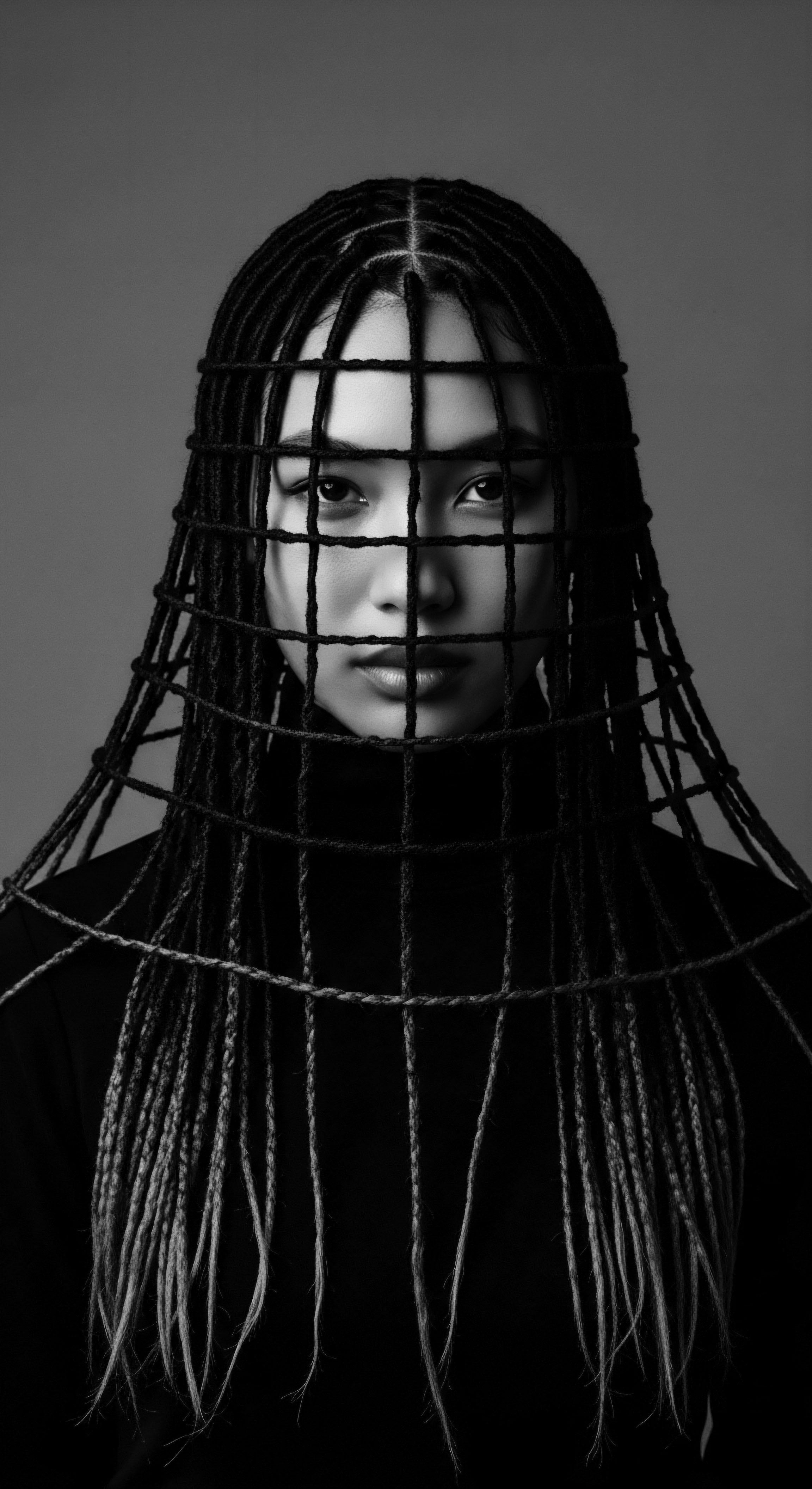
Relay
The story of textured hair, particularly its follicular curvature, is not static; it is a living continuum, a relay race of wisdom passed from generation to generation. Understanding the elemental biology of the curved follicle provides a lens through which we can fully appreciate the holistic care regimens, the nighttime rituals, and the solutions to common challenges that have been, and continue to be, shaped by ancestral wisdom. The profound insight into why these follicles curve underpins a philosophy of care that respects the hair’s unique structure, nourishing it from its very source and honoring its deep heritage.
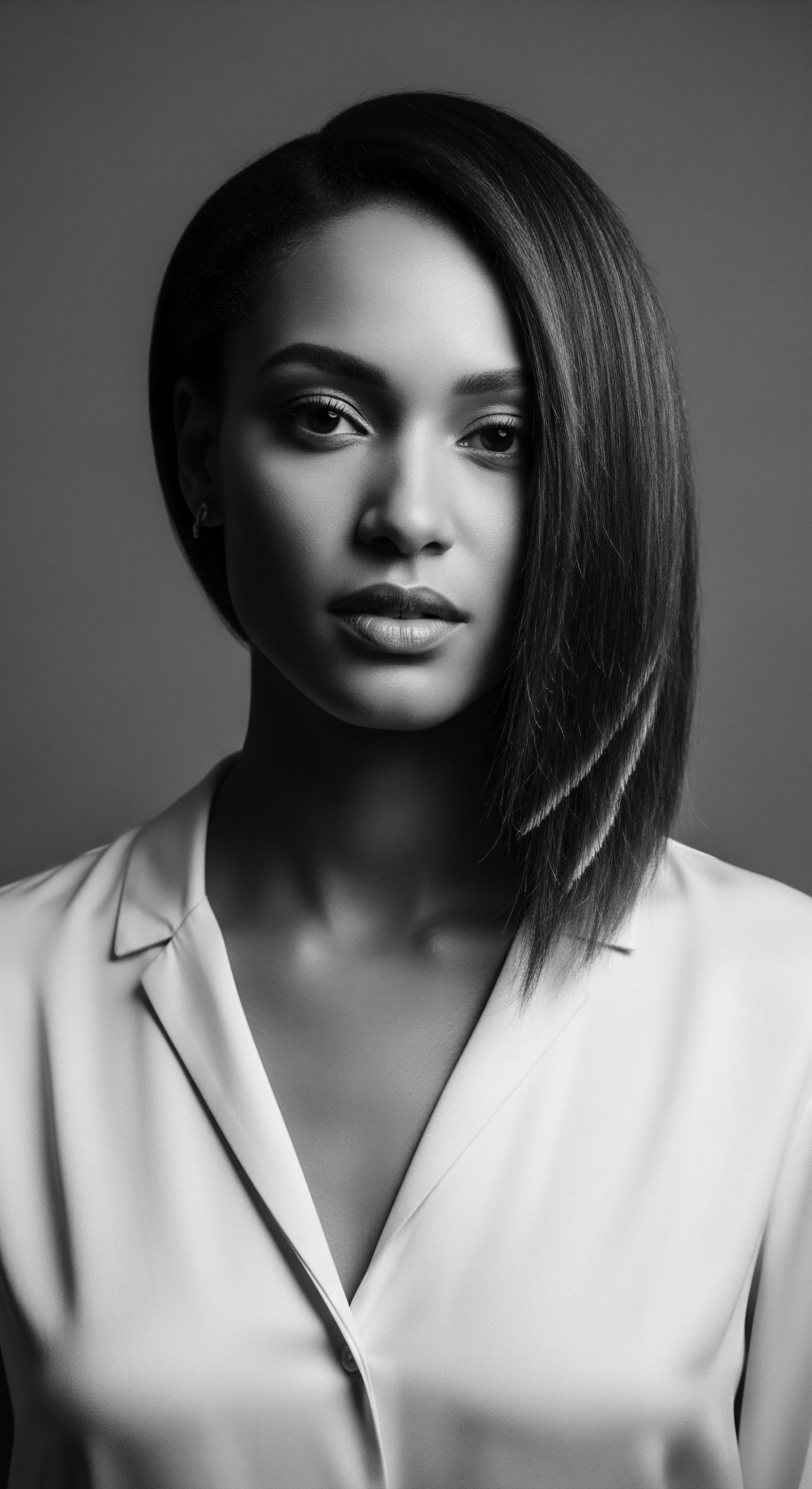
Nourishing the Coil ❉ Care Philosophies
The curved path of the hair shaft, as it emerges from its S-shaped follicle, naturally presents a challenge for the scalp’s natural oils, known as sebum, to travel uniformly down the entire length of the strand. This anatomical reality means textured hair often tends to be drier than straight hair, necessitating a specific approach to moisturization and care. This understanding, though articulated in modern scientific terms, echoes ancestral care philosophies that prioritized hydration and lubrication.
Holistic hair care for textured strands is deeply rooted in this understanding. It is a regimen designed not to fight the hair’s inherent curvature but to support it, celebrating its natural tendencies. It involves a balanced approach to cleansing, conditioning, and moisturizing, often with a focus on products and practices that retain moisture and protect the hair from physical stress. The goal extends beyond superficial appearance; it aims for the vitality of the strand, acknowledging its biological design and its cultural significance.

Sanctuary of Sleep ❉ Nighttime Practices
Among the most cherished and practical aspects of textured hair care are the nighttime rituals, particularly the tradition of protecting hair while sleeping. The curved structure of textured hair makes it prone to tangling, breakage, and moisture loss from friction against fabrics. Recognizing this, ancestral wisdom developed protective measures. The practice of wrapping hair, covering it with scarves, or using bonnets, often made from smooth materials like silk or satin, dates back generations.
This simple yet profound act creates a Nighttime Sanctuary for the hair, minimizing friction and preserving the hair’s moisture balance. It is a practice passed down through families, a silent act of care that speaks to the enduring wisdom of preserving hair vitality. Beyond the practical benefits, these rituals also carry a cultural weight, connecting contemporary individuals to the care practices of their ancestors, creating a bridge across time. The bonnet, for instance, serves as a modern-day continuation of head coverings that held both functional and symbolic meaning in earlier eras.
Ancestral nighttime rituals, such as covering hair with bonnets, offer a heritage-informed solution to protect textured strands from friction and moisture loss, respecting the unique challenges posed by follicular curvature.

From Earth’s Bounty ❉ Ancestral Ingredients
The ancestral knowledge of textured hair care often centered on natural ingredients readily available from the earth, remedies applied with deep understanding of their properties, long before chemical compositions were analyzed in laboratories. These practices directly addressed the needs of hair emerging from curved follicles—namely, moisture, strength, and gentle detangling.
- Shea Butter ❉ Traditionally used across West Africa, this rich emollient provided deep moisture and protection for hair, counteracting the natural dryness associated with coiled strands.
- Palm Oil and Palm Kernel Oil ❉ Popular for scalp oiling in West and Central Africa, these oils helped nourish the scalp and hair, contributing to overall health.
- Black Soap ❉ Used for cleansing in many West African nations, this natural soap provided a gentle, effective wash that did not strip hair of its essential moisture.
Modern hair wellness advocates often draw upon this rich heritage, formulating products that honor these traditional ingredients while incorporating scientific advancements. The understanding of lipids in African hair, for instance, shows it possesses more highly disordered lipids, meaning it can be more permeable to treatments and moisture. This scientific understanding supports the ancestral emphasis on nourishing oils and butters for textured strands. This convergence of ancient practices and contemporary science allows for a truly holistic approach to caring for textured hair, one that reveres its heritage while supporting its ongoing health.

Addressing the Ailments ❉ Resilience in Health
The unique structure of textured hair, born from its curved follicle, can predispose it to certain challenges, such as breakage at the points of curvature and dryness. Historically, these challenges led to the development of specific handling techniques and styles designed to minimize stress on the hair. For example, communal grooming sessions were not merely social events; they were opportunities for skilled individuals to carefully detangle, braid, and oil hair, distributing the workload and preserving hair health.
In the modern context, while some hair treatments, like chemical relaxers, have historically been linked to damage and hair loss in some African American women, there is a growing movement towards practices that champion the hair’s natural state. Research continues to refine our understanding of textured hair’s resilience and vulnerabilities. For example, the recognition that tightly coiled hair may be more susceptible to traction alopecia, a form of hair loss from prolonged tension, has led to a renewed emphasis on looser protective styles and mindful care.
The ongoing work to understand and address these concerns, often drawing from both scientific inquiry and the enduring wisdom of ancestral practices, continues to strengthen the legacy of care for textured hair. This journey of understanding allows for a deeper connection to the living story of each strand, a story of survival, adaptation, and beauty.
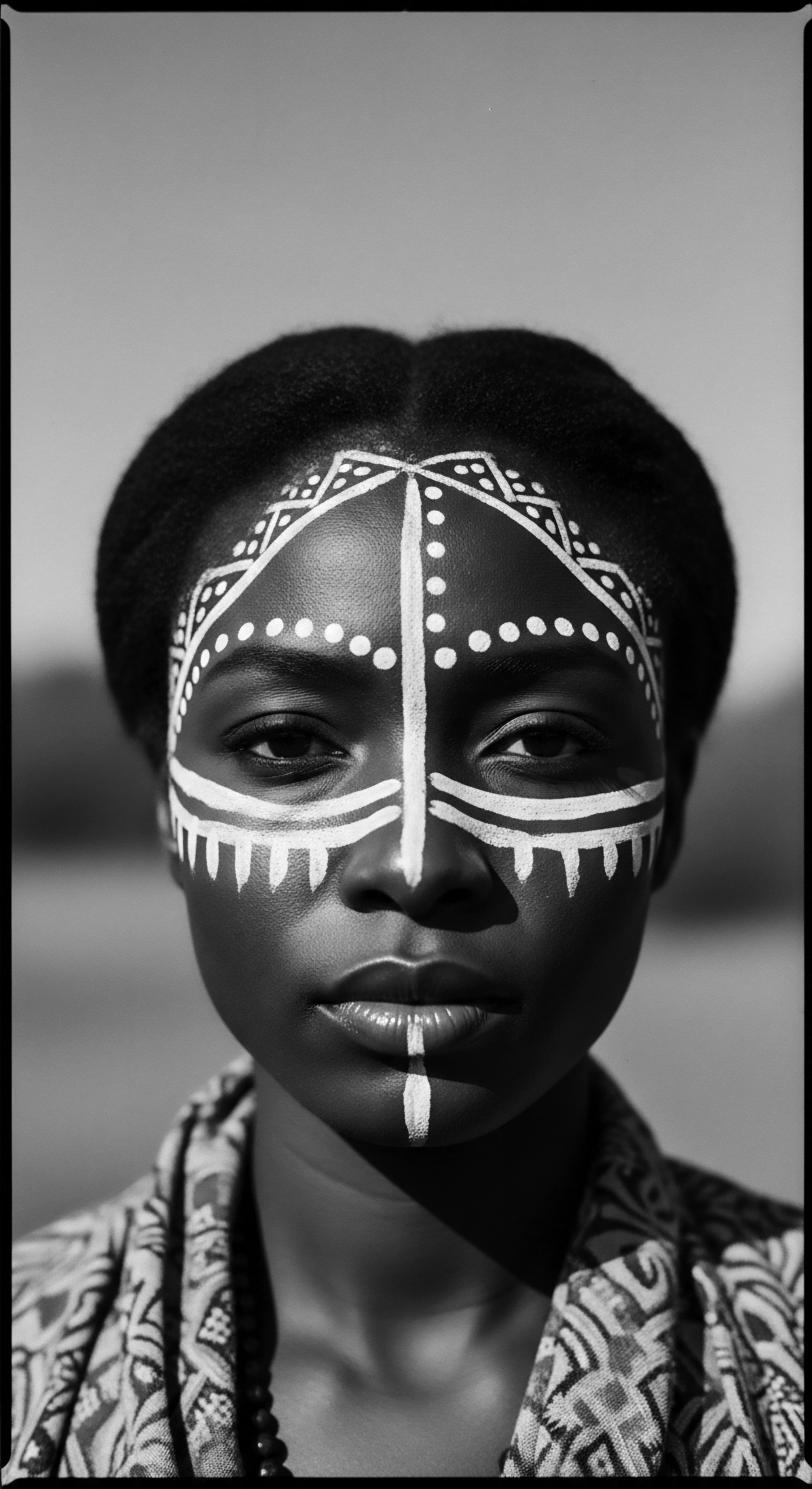
Reflection
To consider why textured hair follicles curve is to embark upon a meditation on existence itself, a recognition of how profoundly biology, history, and identity are intertwined. The elegant twist of a coil, the graceful bend of a wave, is not merely a random act of nature. It is a whisper from ancient times, a testament to human adaptation in the face of the sun’s potent gaze, a blueprint for survival etched into our very being. Every curve holds a story, a narrative that stretches back to the earliest human footsteps on the African continent, carrying forward the echoes of ancestral wisdom, resilience, and ingenuity.
In the living archive of Roothea, we see that the science of the follicle is inseparable from the soul of the strand. It guides our hands in tender care, inspires our creativity in styling, and reminds us of the power inherent in embracing the natural form. The journey of textured hair, from its evolutionary origins to its present-day celebration, is a powerful reaffirmation of heritage—a continuous unfolding of beauty and strength that will continue to shape futures, one glorious curve at a time. This profound connection ensures that the understanding of follicular curvature remains a central pillar in the ongoing saga of textured hair, a legacy passed on with reverence and joy.
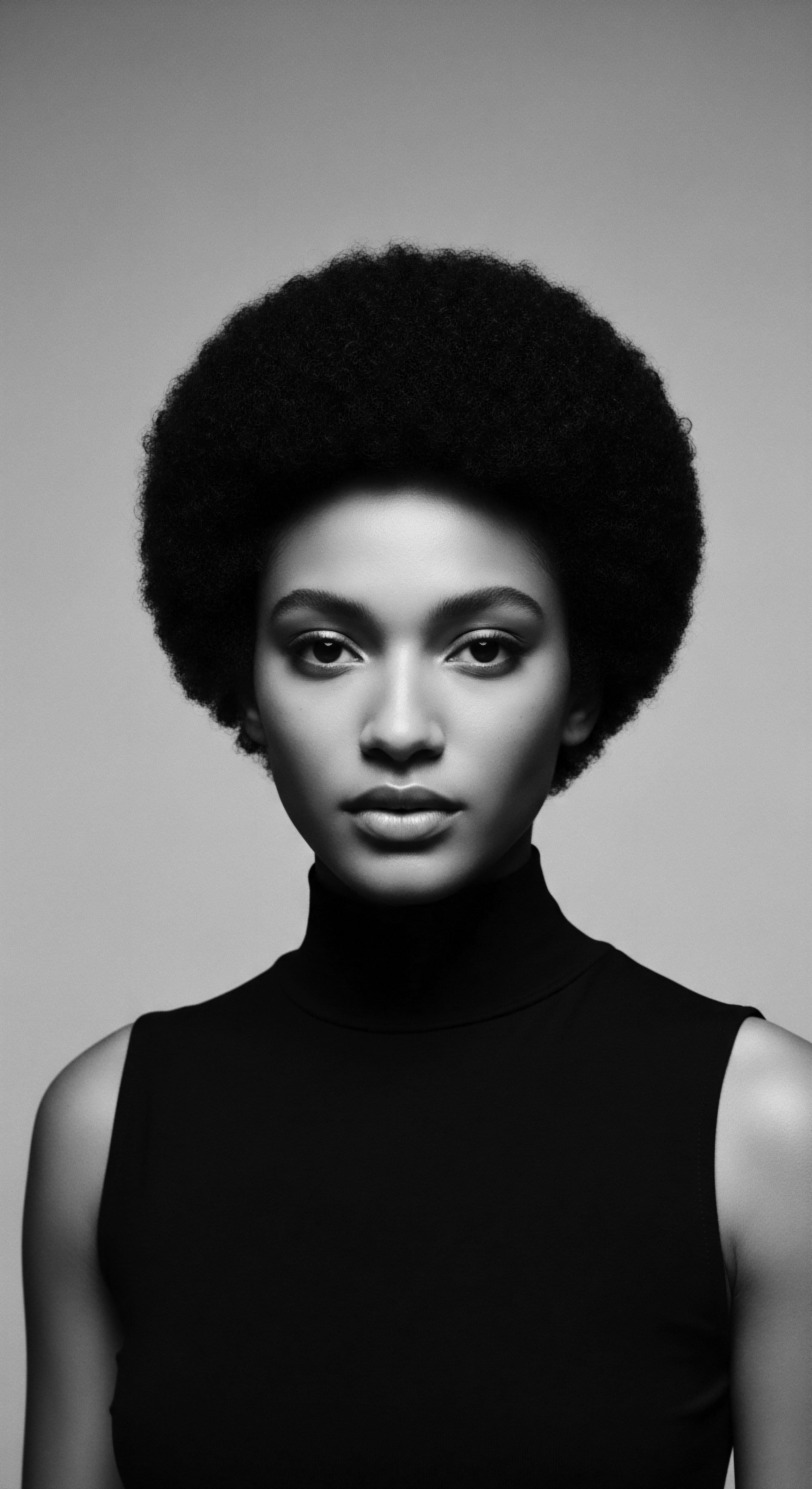
References
- Byrd, Ayana, and Lori L. Tharps. Hair Story ❉ Untangling the Roots of Black Hair in America. St. Martin’s Press, 2001.
- Loussouarn, G. “African Hair Growth Parameters.” British Journal of Dermatology, vol. 145, no. 2, 2001, pp. 294–297.
- Robbins, Clarence R. Chemical and Physical Behavior of Human Hair. Springer, 2012.
- Thibaut, S. et al. “Human hair shape is programmed from the bulb.” British Journal of Dermatology, vol. 152, no. 4, 2005, pp. 632-638.
- Westgate, G.E. et al. “The what, why and how of curly hair ❉ a review.” Experimental Dermatology, vol. 26, no. 5, 2017, pp. 483–490.
- Wu, Y. and L. Li. “Understanding the Structure and Properties of African Hair.” Journal of Cosmetic Science, vol. 59, no. 4, 2008, pp. 325-334.
